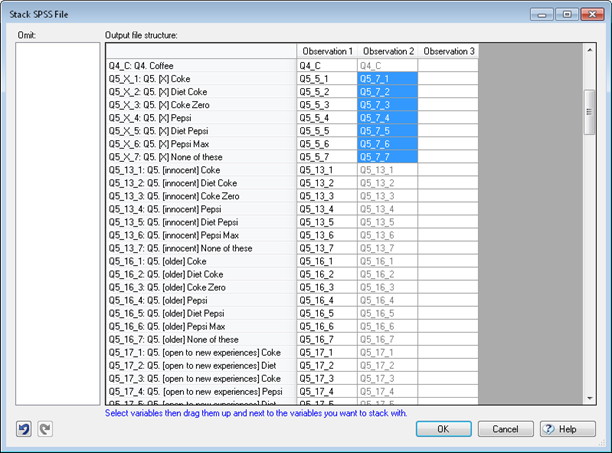Php Create Spss File

One of the new features in SPSS version 12 is OMS, which stands for Output Management System. This 'system' is a series of commands that allows you to output the results from any procedure into an SPSS data file, as well as several other formats. To keep things simple, we will only look at outputting results to a data set.
How to Effortlessly Create SPSS Syntax and Automatically Add it to your Output. This is more important that running a separate syntax file. If you are running a lot of analyses and are not impeccably organized about which output goes with which syntax program file, that syntax file isn’t going to help you remember what you did. I was just wondering if it was possible to create a directory file folder using syntax and then save the output file in it? If you have SPSS 14 or 15 and Python.
To start, you use the oms command. The only subcommand that is technically required with this command is the destination subcommand, on which you tell SPSS in what format to save your output and where you want that file to be saved. Often, you also need to use the if subcommand, on which you specify which tables of the output that you want in your output data file. This is necessary because it is often not possible to create one data set with all of the tables from the output in it. (Of course, this is not true of other output formats, such as html.) To end your OMS session, you can either issue the omsend command, or end your SPSS session. You can have multiple OMS sessions running concurrently, and you keep track of them with the tab subcommand.
With the tab subcommand, you can name the session when you start it, and then use that name on the tab subcommand on the omsend command. You can get information on the various OMS sessions that are currently running by issuing the omsinfo command. Example 1 Let’s use the data set for our example. Suppose that we want to run a crosstab and output the results to a data set. First, we would start our OMS session by issuing the oms command. We will specify that we want our output saved as a data file and that we would like this file saved on the D: drive. Reengineering The Corporation Michael Hammer Pdf Printer. Download Encyclopedia Of Spirits Pdf Printer. On the if subcommand, after the commands keyword, we specify that we want output created by the crosstabs command, and after the subtypes keyword, we specify that we want the contents of the Crosstabulation table. Download Install Printer Canon Pixma Ip1980.
(The Case Processing Summary table would have been another option.) The quotes around the name of the command and the table are necessary, as is the use of the equals signs and the square brackets. Once we have started our OMS session, we issue the crosstabs command, end our OMS session, and then open the new data file. We use the list command to see the data file in the output window. (NOTE: Although you can type crosstab instead of crosstabs and get the correct output, in the oms command, you must use crosstabs. If you use crosstab, you will not have any data in your new file.) get file 'D:hsb2.sav'. Oms select tables /destination format = sav outfile = 'D:results.sav' /if commands = ['crosstabs'] subtypes = ['Crosstabulation'].
Crosstabs tables = female by prog. Get file 'D:results.sav'. The variables are listed in the following order: LINE 1: Command_ Subtype_ Label_ LINE 2: Var1 Var2 Var3 @1.00 @2.00 @3.00 Total Command_: Crosstabs Crosstabulation female * type of program Crosstabulation Var1: female.00 Count 21 47 23 91 Command_: Crosstabs Crosstabulation female * type of program Crosstabulation Var1: female 1.00 Count 24 58 27 109 Command_: Crosstabs Crosstabulation female * type of program Crosstabulation Var1: Total Count 45 105 50 200 Number of cases read: 3 Number of cases listed: 3 Example 2 Now let’s try a slightly more complex example.